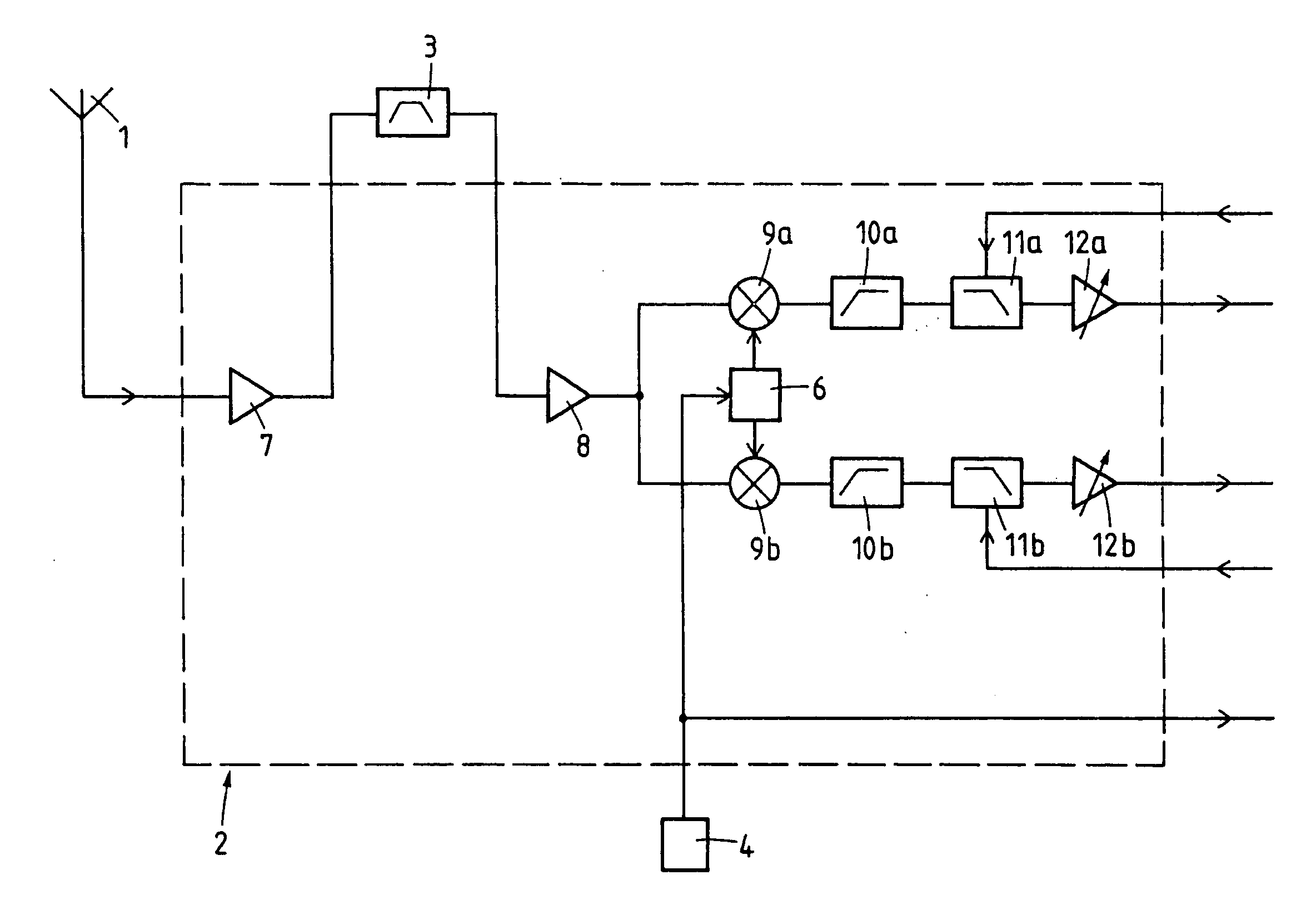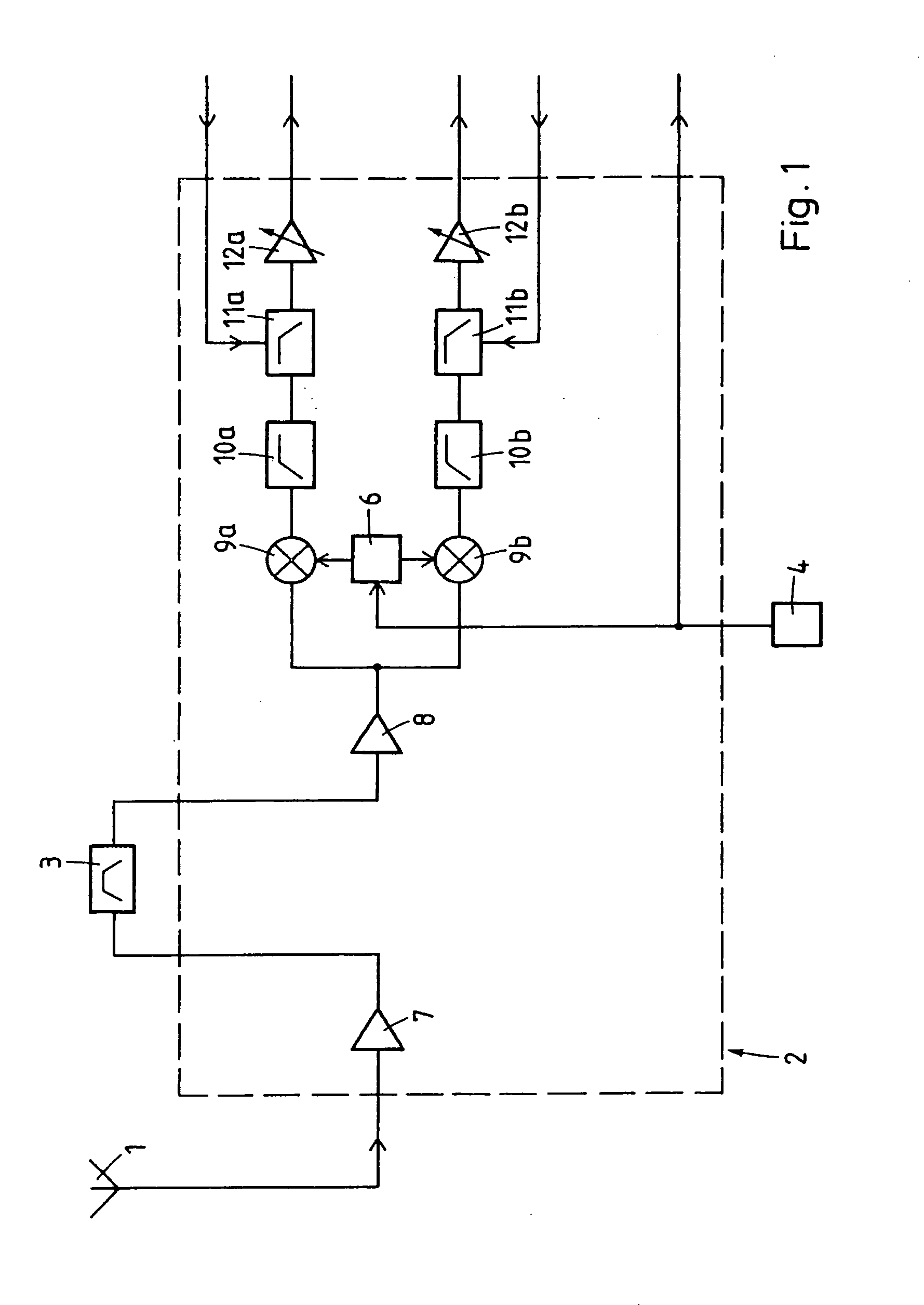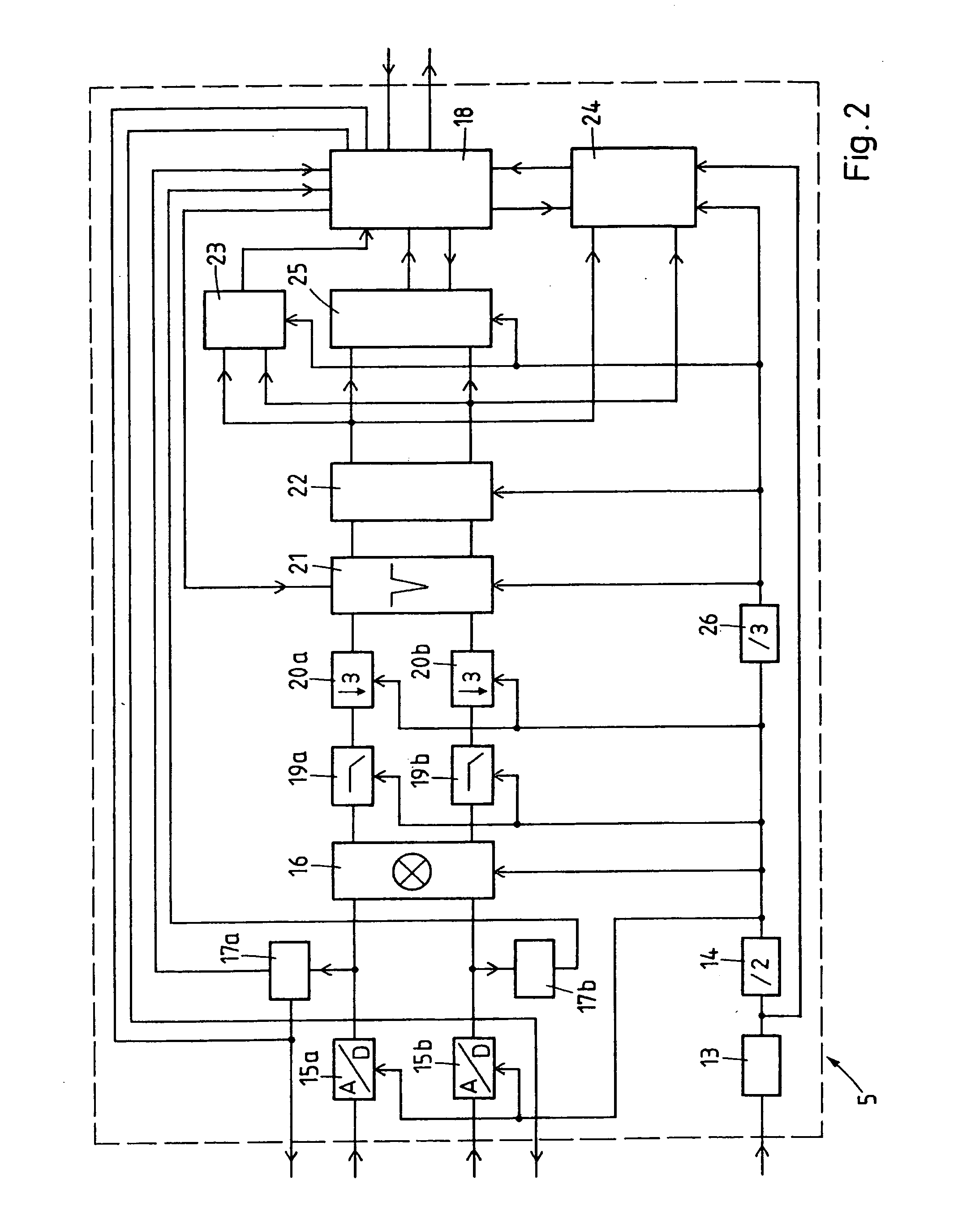Method of processing a digital signal derived from an analog input signal of a GNSS receiver, a GNSS receiver base band circuit for carrying out the method and a GNSS receiver
a technology of a gnss receiver and a processing method, which is applied in the direction of satellite radio beaconing, measurement devices, instruments, etc., to achieve the effect of shortening the time lapse and accelerating the signal acquisition
- Summary
- Abstract
- Description
- Claims
- Application Information
AI Technical Summary
Benefits of technology
Problems solved by technology
Method used
Image
Examples
Embodiment Construction
[0020]The embodiment described in the following is a receiver suitable for GPS. However, the modifications which are necessary if other systems like GLONASS or GALILEO are to be used are generally straightforward. The receiver comprises (FIG. 1) an antenna 1 followed by a radio frequency circuit 2, a bandpass filter 3, a TCXO (temperature compensated crystal oscillator) 4 or XTO (crystal oscillator) and (FIG. 2) a base band circuit 5. It is advantageous to implement the radio frequency circuit 2 and the base band circuit 5 each on a separate semiconductor chip but other solutions are also possible.
[0021]The bandpass filter 3, usually an SAW (surface acoustic wave) filter, is a component external to the radio frequency circuit 2. The TCXO 4, also a separate component, provides a basic frequency of between 19 MHz and 40 MHz, e.g., 26 MHz, which is fed to the radio frequency circuit 2 and further to the base band circuit 5. In the radio frequency circuit 2 the output signal of TCXO 4 c...
PUM
 Login to View More
Login to View More Abstract
Description
Claims
Application Information
 Login to View More
Login to View More - R&D
- Intellectual Property
- Life Sciences
- Materials
- Tech Scout
- Unparalleled Data Quality
- Higher Quality Content
- 60% Fewer Hallucinations
Browse by: Latest US Patents, China's latest patents, Technical Efficacy Thesaurus, Application Domain, Technology Topic, Popular Technical Reports.
© 2025 PatSnap. All rights reserved.Legal|Privacy policy|Modern Slavery Act Transparency Statement|Sitemap|About US| Contact US: help@patsnap.com



